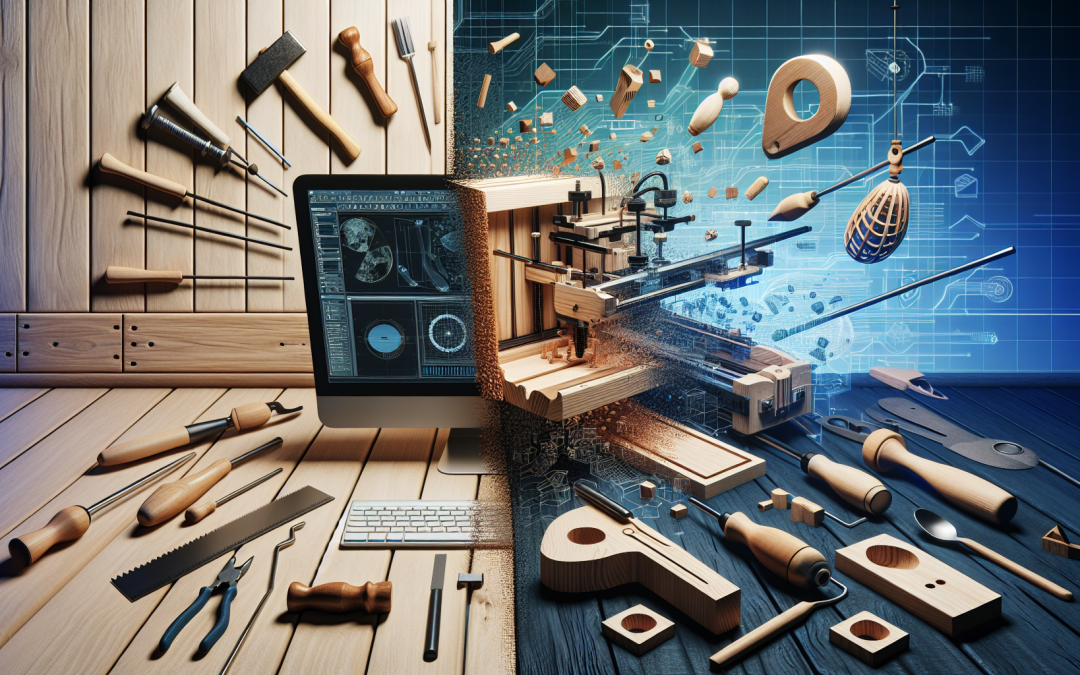Woodworking is as much of an art as it is a craft. Technological progress can add another layer of complexity and creativity, enhancing the craftsmanship to unimagined levels. This article delves into two significant aspects of technology integration in woodworking: Computer-Aided Design (CAD) and 3D Printing.
Demystifying CAD for Woodworkers
Computer-Aided Design, or commonly known as CAD, has revolutionized various industries, including woodworking. CAD has made woodworking more precise, reducing common mistakes such as weak joints or inaccurate cuts encountered in the field.
A CAD tool allows for an electronic representation of your project, where you can design, modify, and view your creation, focusing even on intricate details. These exquisitely crafted masterpieces can be modified, enhanced, or resized, saving precious time when working on multiple variations of a design.
The use of CAD doesn’t stop there. To understand wood movement science, which can have a significant impact on your project, CAD models can prove invaluable. Understanding how wood works can elevate your woodworking projects.
3D Printing: Advanced Technology for Traditional Craftsmanship
Beyond CAD, another groundbreaking invention that has revolutionized woodworking is the advent of 3D printing. Technology, such as 3D printing, can help you create custom fixtures, jigs, or even woodworking templates with ease.
3D printing lends to the art of precision in woodworking, allowing you to create highly accurate pieces that would be challenging to design solely by hand. From practical items such as clamps to complex pieces like intricate molds, 3D printing knows no bounds.
In addition to these, 3D printed tools have a low manufacturing cost, especially when you need highly specific or customized tools for a particular task. This means you can worry less about the wear and tear of your tools – simply print a new one when required!
Transforming Ideas into Reality
Integrating technology in woodworking bridges the gap between ideation and execution. Do you have a design concept that looks perfect on paper but seems impossible to implement? Use technology. Create your complex designs in a CAD tool, and use a 3D printer to manifest your idea into reality. Work on creating artistic and intricate patterns, elaborate joints, or wood laminate pieces with precision and ease.
Enjoy the liberty of pushing your creative boundaries without worrying about the feasibility of creating your piece. With technology in your woodworking toolkit, sky’s the limit.
Promoting Sustainable Craftsmanship
As we progress towards sustainable living, it’s crucial that our work practices reflect the same ethos. Woodworking is inherently eco-friendly as you’re crafting products from a natural, renewable source: the trees. Yet, there’s always room for improvement. By upcycling wood or using reclaimed wood, you can enhance your eco-credentials.Crafting beautiful pieces from reclaimed wood not only adds character to your work but also serves the environment.
Additionally, using virtual tools such as CAD for creating virtual prototypes reduces dependency on tangible resources, which results in less wastage. Similarly, small components or tools can be 3D printed instead of ordering from a manufacturer. Both these practices further translate into a smaller carbon footprint and sustainable woodworking.
Investing in Woodworking’s Future: You
As technology continues to infiltrate every aspect of our lives, why should woodworking be any different? Equip yourself with an updated toolbox containing not just saws and chisels, but CAD and a 3D printer. Reach out for a woodworking guide, enroll yourself in skill-building tutorials, and keep learning, because a woodworker’s journey of learning never ends.
By embracing technology’s fluidity, you seamlessly blend timeless workmanship with contemporary techniques to create masterpieces that are a testament to your evolved skills. Step forward into the exciting realm of tech-integrated, sustainable woodworking. After all, the art of woodworking isn’t just about preserving the past; it’s about innovating for the future!

